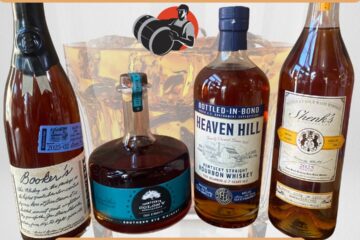1. Domaine Lelievre, Côtes de Toul Gris de Toul 2018
The Region – Cote de Toul: Roughly half way between Champagne and Alsace, in s straight line between Paris and Strasbourg, is the Côtes de Toul. Grapes have been grown there since the Romans nearly 2000 years ago.
Wine Education: Vin Gris = Gamay Noir (the most common grape variety in Cotes de Toul) and Pinot Noir as the main grape variety. For Vin Gris, at least two grape varieties must be used, and the major grape variety is not allowed to exceed 85%. At least 10% Pinot Noir must be used, and the total proportion of accessory grape varieties is not allowed to exceed 15%. This wine is made from Gamay and Pinot Noir.
More Education: All rose wines are made from grapes that are blue, purple, or red. All wine gets their color from the grape skins. In other words, if you clip a bunch of Cabernet grapes and squeeze them the juice will be clear like 7-Up. If you allow minimal amount of skin contact time the wine will be rose. Regular Price $19.99 Cooper’s Price $16.99
2. Theorize Sauvignon Blanc Napa Valley 2016
About Sauvignon Blanc – Sauvignon Blanc is a white grape planted throughout the world, and may also be labeled as Fumé Blanc. It is the grape variety used in making the ever popular Sancere in Loire, France. Sancerre is a small wine district in central France, famous for its crisp Sauvignon Blanc. It is also blended with Semillon to make White Bordeaux and the dessert wines of Sauterne and Barsac.
Winemaking: This wine is 100% Sauvignon Blanc. Fermentation: 50% was fermented in stainless steel tanks and 50% was barrel fermented. Aging: Aged 8 months, 80% French Oak (10% New oak barrels) and 20% stainless steel. 8 months on heavy lees stirred once every other week. Lees = dead yeast cells and other particles remaining in a wine after fermentation. They settle as sediment at the bottom of the fermenting container. Stirring the juice on the lees adds texture, weight and aromatics to the wine. Its very labor intensive.
Taste Notes: Color: Shiny gold. Nose/Smell: Explosive lychee, peach, apricot and white flowers wrapped in subtle toasted almond. Taste: Crisp yet rich texture from the lees and barrel fermentation – flavors are indicative to the aromatics. Fantastic complexity with restraint towards the use of the oak. Regular Price $26.99 Cooper’s Price $17.99, while supplies last
3. Yves Cuilleron Syrah ‘Les Vignes d’a Cote’ 2017
The Cuilleron family domaine, located in the hamlet of Verlieu in Chavanay (in northern Rhone) was founded in 1920. Yves grandfather was the first to bottle wine from this region for commercial purposes. Domaine Cuilleron are famed in the Northern Rhone for stunning Syrah and Condrieu in an impressive portfolio. They’re very well known in classic Northern Rhone appellations such as Cote-Rotie and St Joseph.
The region – Collines Rhodaniennes: Is in Northern Rhone. The landscape is characterized by the hills and valleys that surround the Rhône River. The soil is granite.
Winemaking: 100% Syrah. The grapes are harvested by hand and destemmed at harvest. Fermentation is in open-top cuvees with two week maceration. Maceration = Is the winemaking process where the phenolic materials of the grape—tannins, coloring agents and flavor compounds—are leached from the grape skins, seeds and stems into the must. Aged eight months is stainless and barrel.
Critic review: Bright purple. Ripe cherry, blackberry and violet on the perfumed nose. Round and fleshy but lively as well, offering dark fruit, allspice and cracked pepper flavors that pick up a smoky note on the back half. Deftly blends power and energy and finishes smooth and long, with ****** gentle tannins coming in late. Josh Raynolds, vinous.com Cooper’s Price $21.99
4. Chateau Couronneau Bordeaux Superior 2015
This is 100% Merlot wine from Château Couronneau, an estate certified organically and biodynamically since 2009 and 2011 respectively
Wine Education: Bordeaux Superieur wines are, as their name implies, a slightly “superior” form of standard Bordeaux AOC wines. The key differences lie in the vineyards, which must meet higher planting densities; the more vines there are the harder each has to fight for survival, resulting in stronger, deeper root systems and healthier vines. The maximum yield per hectare obtained from the vineyards is also 10 percent lower for the supérieur wines.
Tasting Notes: Color: dark purple Nose/Smell: black raspberries, black cherry and violets. Taste: dark black fruit, subtle spice, rich full-bodied and dense texture through the mid-palate with firm, but approachable tannins. Overall: Fantastic value. 2015 is regarded as an excellent vintage!
What is biodynamic to wine? Biodynamic viticulture is the practice of balancing this resonance between vine, man, earth and stars. Essentially, biodynamics is a holistic view of agriculture. Regular Price $22.99 Cooper’s Price $19.99

